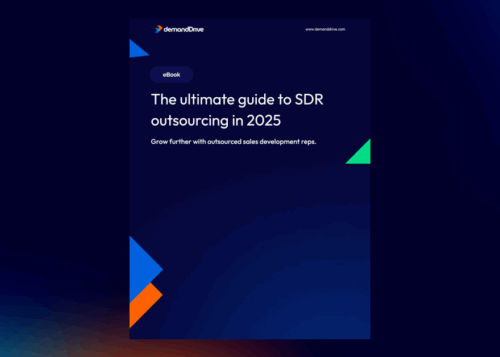onDemand: The Fate of Sales Development

Sales development looks a whole lot different in 2023 than it did in 2013. Or 2016. Or even 2020.
Tactics, trends, and technologies change quickly. Best practices are constantly evolving. How much value we place in the SDR role seems to change every day.
Point being, the world of sales development is dynamic. It’s hard to predict what it will look like in a few years’ time, let alone later this year.
But that didn’t stop us from trying!
Alex and Lindsay ran a thought exercise with our partners at Transcends Marketing to see if we could predict the “fate” of sales development over the next few years. Taking stock of our institutional knowledge, current trends, and what we can learn from the past, we put together a laundry list of what sales development might look like in 2025 and beyond.
From discussing the AI takeover to a forced reversal of our WFH culture to thinking about the SDR “gig economy,” Alex and Lindsay touch on a few different futuristic outcomes.
And while they don’t really think anything they predicted will come true (we don’t have a crystal ball, after all), it’s a good exercise to help prep teams for the uncertain future of the sales development role. Plus, it was pretty fun
How do you think the role will change in the next 3 – 10 years?
What You’ll Learn
ICs, Managers, and Leaders will come out of this 30-minute session prepared to adapt to the uncertain future of the sales development role.
Watch The Event Here:
FAQs
Is This Live? Nope! This is a pre-recorded event, so you can watch it anytime, anywhere.
Where Can I Send Follow-Up Questions? Feel free to get in touch with Lindsay on LinkedIn or email our marketing team.
Can I Get Involved? You sure can! If you want to be a guest on a future event, let us know by emailing our marketing team.
Any Additional Resources? You bet! Check them out below:
Related Resources
Continue exploring

Focus on the Future

Getting Sales Development a Seat at the Table

Avoiding The Pitfalls of Sales Development

A Recipe for Outsourced Sales Success

Top 5 Sales Dev Trends in 2018

How to Build Market Reputation and Drive Sales



